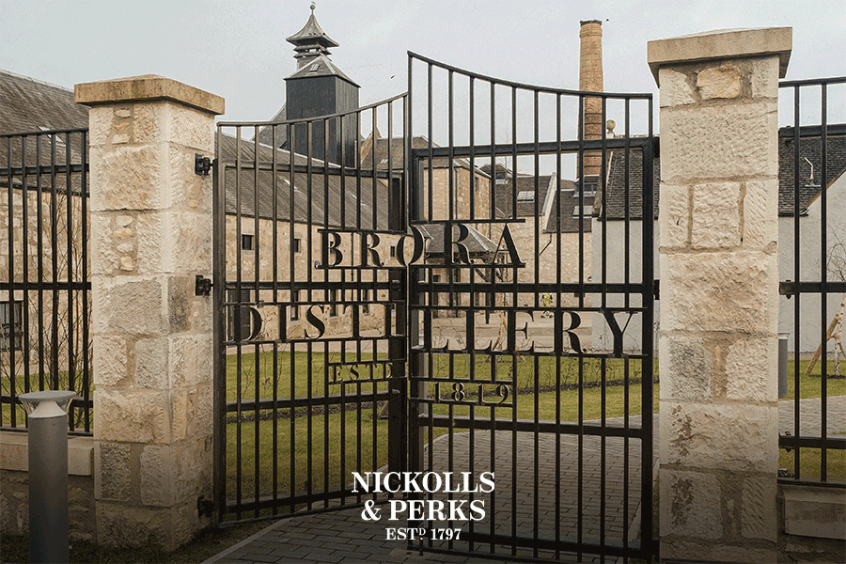The enchanting expanse of Scotland has been home to unknown numbers of distilleries throughout time, but few hold such venerated status as the mighty Brora. This fascinating producer manifested in several forms throughout its lifetime, adapting to expansions and changes in demand that place it in the somewhat unique position of being known for particular vintages and varying styles of spirit. Superseded by its replacement, the Clynelish Distillery, the final nail in the Brora coffin seemingly occurred in 1983 when the whisky market became oversaturated and many distilleries were forced to close their doors. But for Brora, the story didn’t quite end there; with whisky more popular than ever, the distillery has risen from the ashes, painstakingly revived by Diageo and set to continue its glorious journey.
Earlier this year, the Nickolls & Perks team ventured into the deep North with our friends at Justerini & Brooks, to explore this illustrious distillery and to find out more about its momentous resurrection.
A Warm Welcome
On the final approach to the distillery, we were first met with the ultra-sleek Clynelish, Brora’s historic replacement and the sibling with which it will always be intrinsically linked. As we ventured around this modern titan, a humbler view awaited: the original cast iron gates of Brora proudly stood, along with our tweed-clad host for the day, Andy.
There’s a poignancy about stepping through the threshold of such a revered distillery; you realise you’re on hallowed ground, and that every brick, door and blemish carries a tale that weaves into the fabric of a legend. Everything that we saw from now on was going to be special.
We were ushered into a warm hall rich with history. Curiosity was rewarded, as every wall was adorned with artifacts of a bygone era; Andy explained that even the very table at which we sat was born from Oak sown in the same year the original distillery was built. The story of Brora unfolded in full, as our host produced maps of the town of Brora from the 19th and 20th centuries, showing the growth the town enjoyed and the effect on demand for the whisky.

The Story So Far
It’s worth taking a moment to clarify why this distillery has become such a point of intrigue for whisky enthusiasts and collectors alike, so here’s the condensed version of Brora’s history…
The original distillery was built in 1819 and was named the Clynelish Distillery. Like most distilleries, output grew as demand for Scotch whisky increased. Fast forward to the 1960s, and demand had grown to a point that the original Clynelish could no longer sustain; there had to be a dramatic increase in output. The solution? A new sister distillery was built just metres away, and it too was named Clynelish.
This practice wasn’t unique to Clynelish, a pattern had emerged whereby distilleries increased their output by building sister distilleries that used the same name. This became somewhat confusing, and, eventually, a law was introduced that restricted this practice; sister distilleries now had to use a unique name. After some discussion, it was decided that the original Clynelish would be named after the local town, Brora.
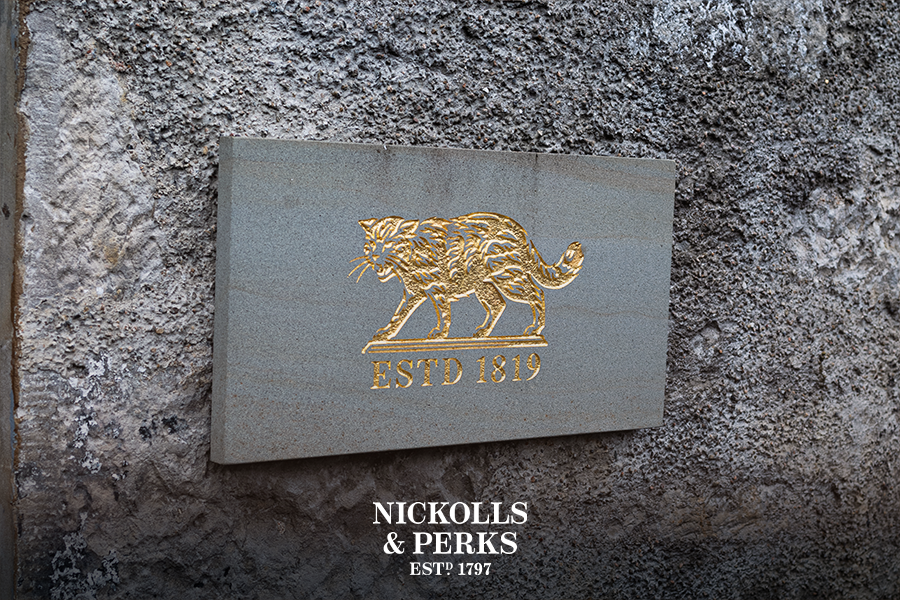
During the era of a shared name and a little beyond, the two distilleries produced a famously waxy style of whisky, with a thick and coastal profile. But change was on the horizon. Islay’s Caol Ila distillery underwent a large-scale overhaul that silenced its stills for several years. With both Caol Ila and Brora under the same parent company, the unusual decision was made to shift Caol Ila’s signature heavily-smoked production profile to Brora temporarily, whilst the expansion of the Islay distillery was completed.
So, what happened when the phase of smoky Brora ended? Did it return to the typical waxy style of traditional Clynelish? As you can probably guess from the preamble, it did not! The last few years of Brora’s lifespan saw it produce a bright and fruity style of non-peated whisky; what we now consider a classic Highland. Then, by 1983, the distillery went silent.
The result? Brora has three distinctive styles, making it particularly famous for its different vintages, which carry dramatically different profiles.
For Whom Does the Bell Toll?
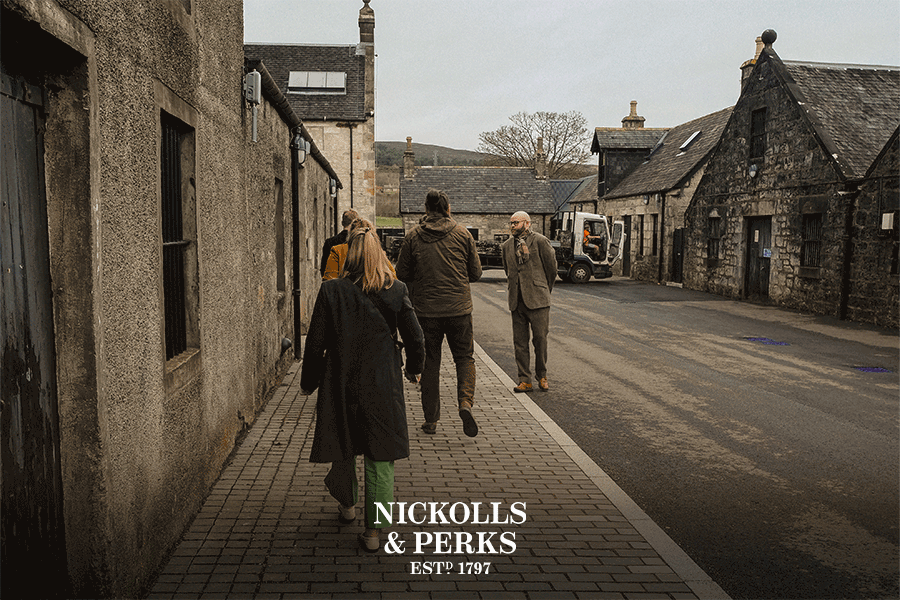
Sufficiently brought up to speed, we made our way through the courtyard to view the externals of the main production facility. What seemed an untouched glimpse into history was actually the result of a meticulous refurbishment; the stillhouse had been painstakingly restored brick by original brick, reinforced for a robust future whilst maintaining a deep respect for the past, all the way up to the original pagoda roof.
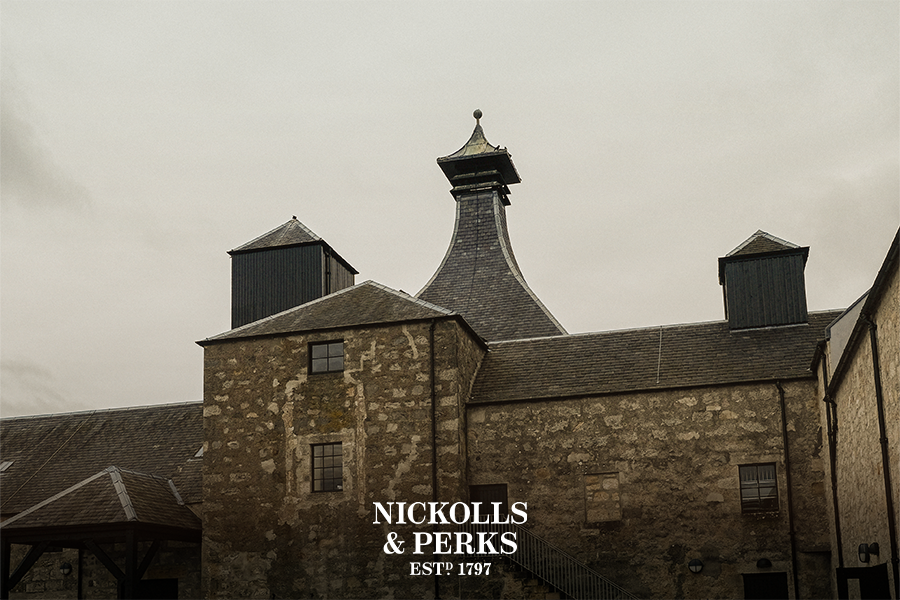
Host Andy pointed out that an original bell hung from the side of the structure, the bell which was once rung to signify break time. When this bell was rung in days gone by, queues of workers and locals would form in the courtyard, ready for their break time dram. Naturally, we all took turns gleefully chiming the bell, which perhaps foreshadowed how our trip would end.
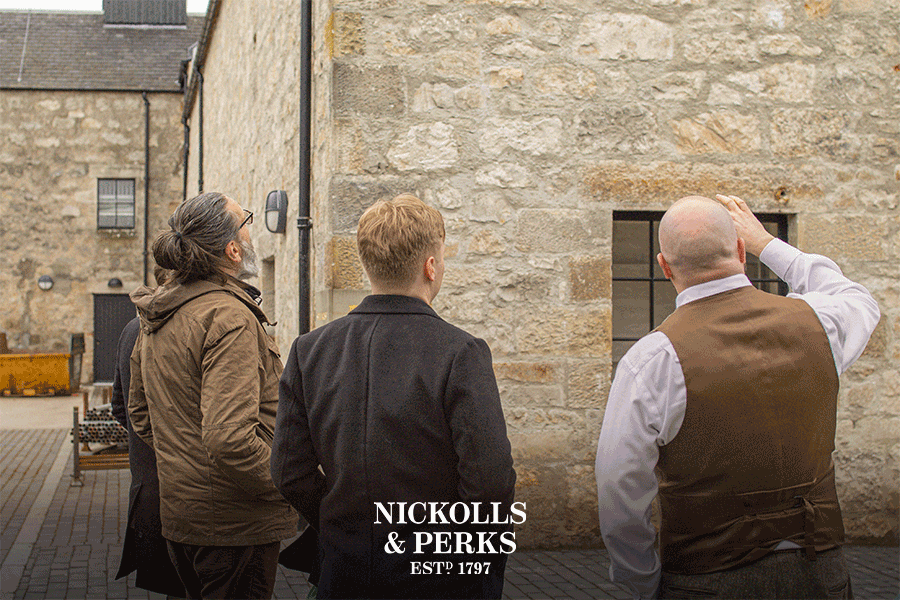
We then proceeded into the belly of Brora, exploring every facet of production. As we ventured through the historic facility, we were proudly regaled with the lengths to which Diageo had gone to honour the heritage of Brora. Though some of the details of this may not yet be shared outside of the distillery grounds, suffice to say that every effort had been made to ensure Brora stayed true to its past, even including the original stills that had undergone extensive refurbishment by hand, restoring them to their former glory.

Liquid Treasure
The tour of the distillery itself had silenced any concern that may have arisen about Brora’s extensive rework; the utmost care had been taken to restore and revitalise the distillery, rather than reinvent it. But as intriguing as all this was, a whisper in our ear had started to grow louder: we were metres away from Brora’s warehouses, and behind those ancient doors lay some of the most valuable whiskies in the world.
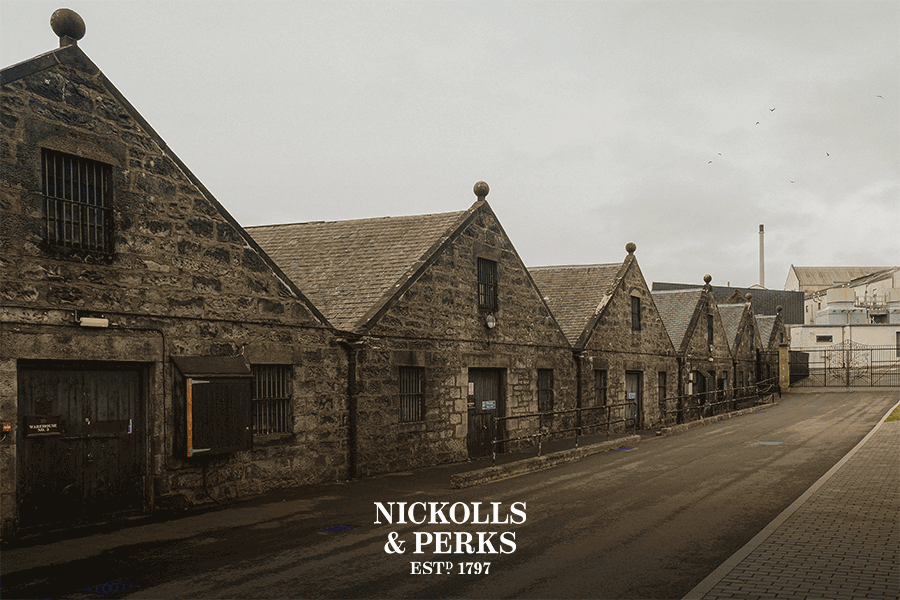
We returned to the courtyard and pressed on toward the warehouses. In the distance, Brora’s replacement, Clynelish, proudly stood, shielding its predecessor and staring beyond into the waters of the North Sea, taking up the mantle of popular demand and allowing Brora to focus on the ways of old. We continued until Andy opened a creaking warehouse door and ushered us inside. Though sworn to secrecy of the exact contents of the warehouse, we did spy Cask #1, patiently developing into a priceless whisky.
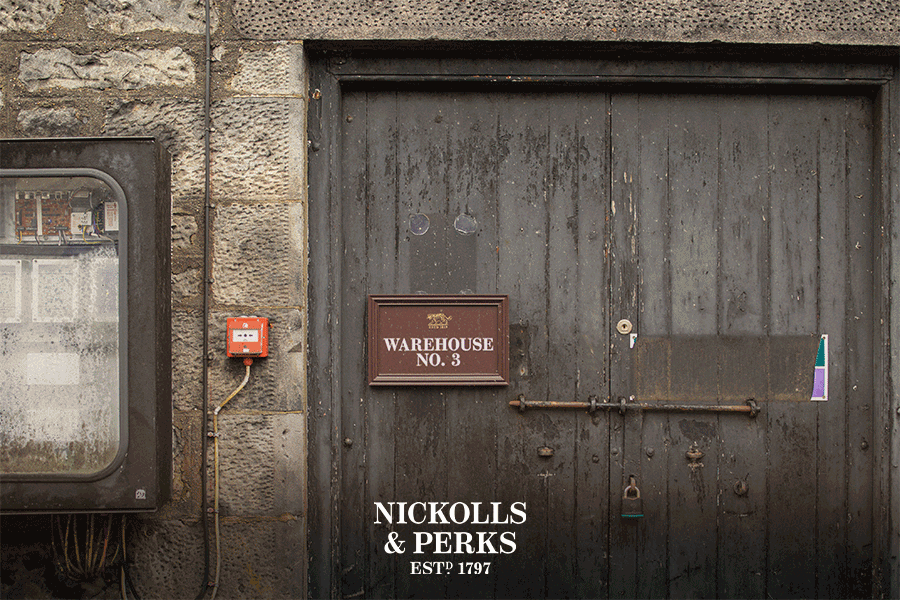
On a pedestal by the warehouse window, a soft light lay upon a single bottle. A 39 year old Brora from a 1982 vintage – some of the last to ever be distilled before the distillery’s closure – and a palpable excitement grew as Andy prepared a glass for each member of the Nickolls & Perks team. The next few minutes took a slower pace, as we indulged in this remarkable dram. Sampling the whisky revealed a soft and bright highland character, one that was amplified by the rancio of close to four decades of patient maturation.
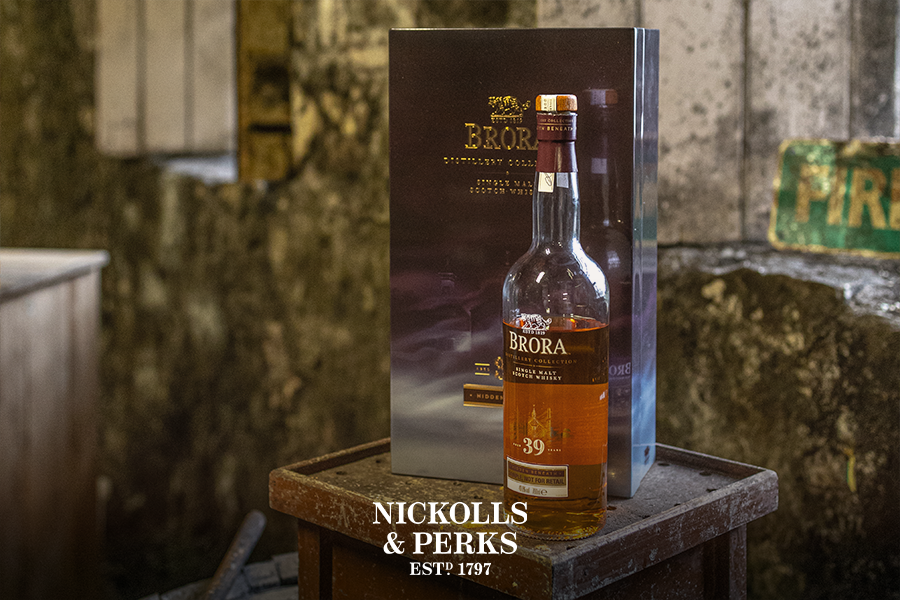
Dram in hand, we again left to the courtyard and made our way to the final stop of our Brora tour, an ornate tasting room of prestige Scottish calibre. Upon the long table that dominated the space sat the very epitome of historic Brora: the Brora Triptych. This fine collection is comprised of three expressions, each representing a defining style of Brora: a bright Highland style of the distillery’s final days; a robust smoky whisky from the late 70s; a waxy and earthy style that the distillery was once synonymous with. The following are our tasting notes of this once-in-a-generation release:
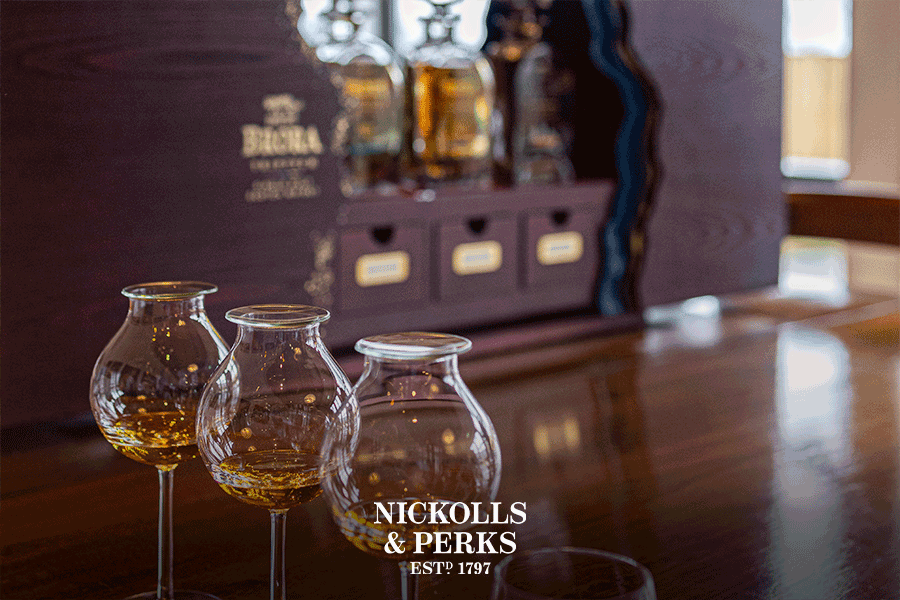
1982 – The Timeless Original – 38 Years Old, 47.5%
Nose:
Heaps of waxy fruits. Fruits skins and flesh pressed together, with particular notes of banana skin, alongside soft peach and orange segments. A presence of old wood rounds the nose to be ornate and elegant.
Palate:
Thick and oily. The spirit shines through but with a distinct fusty character. No harsh or off notes, just complexity and balance; delicate in flavour but robust and heavy in texture.
Finish:
A lingering wood note, with a slight remembrance of spice.
1977 – The Age of Peat – 43 Years Old, 48.6%
Nose:
Antique furniture at the forefront. A lingering note of library and old books. Decades of maturation have mellowed the active smoke profile to a whiff of ash.
Palate:
A coastal character not present on the 1982 cask. Minerality, but still a note of banana coming through, smattered with black pepper. Light wood towards the back of each sip.
Finish:
Light lingering traces of smoke, with an enduring oak character.
1972 – The Elusive Legacy – 48 Years Old, 42.8%
Nose:
A surprisingly heavy hit of smoke on the initial nosing. Pungent, wet, musty and earthy characters, covered in wood lacquer. This is exceptional ageing and heavy rancio in full; liquid history.
Palate:
A sip brings a surprising sweetness. Continued with farmyard and earthy characters that are lifted by honey butter and floral notes.
Finish:
An endless sublime oak and earthiness.
A tremendous thank you to our hosts. The tasting of the Triptych marked the completion of our outstanding visit to Brora, but it also raised an important question: with Brora encompassing so many fantastic styles of whisky, what will the new Brora be? Well, that remains top secret for now, but spirit is flowing from the stills and will be presented to the world when it is ready. When that will be, nobody yet knows, but if there is a moral to the Brora story, it is patience.

